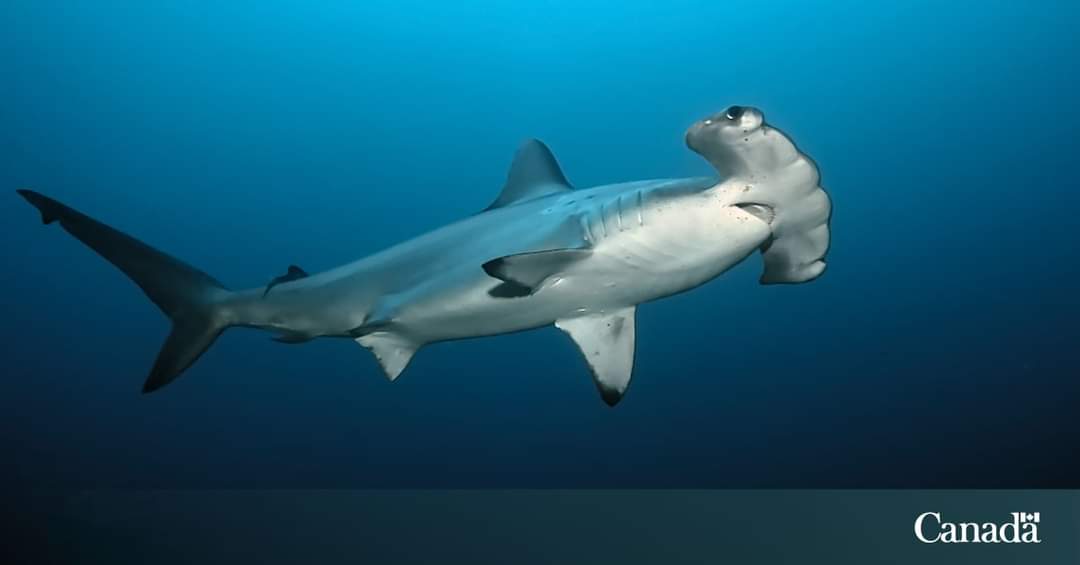**** DFO Release
In the Atlantic, hammerhead sharks range from Florida to Nova Scotia, feeding on stingrays and schooling fish.

Smooth hammerhead
Sphyrna zygaena
Description
The hammerhead sharks are easy to distinguish from other sharks because of the characteristic compressed head. The cephalophoil, or head, is a broad and flattened skull that gives this shark its distinguished shape. However, within the hammerhead family there are several species that are differentiated by subtle differences in the shape of the cephalophoil. The smooth hammerhead is the only one that appears in Canadian waters and is characterised by a head that lacks a central indentation, hence the name. This shark is white underneath turning to brownish gray or a deep olive colour on top. Occasionally they have dusky or black-tipped pectoral fins. The teeth, which are similar on both the upper and lower jaw, are triangular and smooth-edged.
Range
This shark can be found in the western and eastern North Atlantic and in the Indian Ocean. In the western Atlantic the smooth hammerhead ranges from Nova Scotia to Florida. This shark has been reported in Nova Scotian waters off Herring Cove, Sambro Light and Brier Island as well as in St. Margaret’s Bay and on the northeast tip of Georges Bank.
Habitat
The smooth hammerhead shark is distributed worldwide. They occur in all warm temperate waters but are rare in tropical waters. It prefers inshore waters less than 20 meters (65 feet).
Life History
Adults of this species can attain lengths up to 3.7 to 4 meters (12 to 13 feet) and can weigh in excess of 400 kg (880 lbs). These sharks occur at the surface in the open ocean and often form enormous schools during migration along the east coast. They move northward to cooler latitudes during the summer months, returning south in the winter.
Diet
The smooth hammerhead feeds on schooling fish such as herring and menhaden. Skates and stingrays constitute a major part of their diet as well. Other animals in their diet include other sharks (its own species included), shrimp, crustaceans and cephalopods.
Reproduction
The smooth hammerhead is a viviparous species that gives birth to a large litter, between 20 to 40 pups. The pups are usually 50cm (20 inches) long at birth. Individuals become sexually mature at 2.3 meters (7.5 feet).
Interaction with People
This shark is rarely seen by fishermen in Canadian waters and is sometimes taken as a bycatch. It could potentially be dangerous to divers.
Distinguishing Characteristics
- Hammer-shaped head that lacks a central indentation



